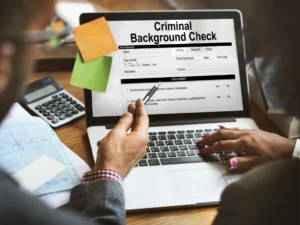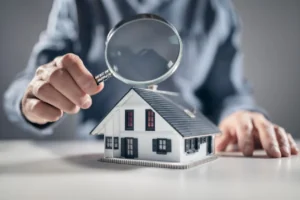What can you do to give tenants a sense of safety?

How to Keep Your Tenants Safe
The signing of a rental lease agreement represents an expectation of trust between a landlord and a tenant. Just as you are placing your faith in a new tenant to pay their rent on time and respect your property, they are placing their trust in you that you will keep them safe while providing them with a habitable home.
What can you do to give tenants that sense of safety when they move into your rental and what are your legal responsibilities to protect them from harm?
Legal responsibilities of a landlord
Warranty of Habitability: Every lease or rental agreement includes an implied warranty of habitability, which means the premises are suitable for human occupancy. In other words, the landlord has followed the local building or housing codes and ordinances which address the structural integrity of the rental unit along with the tenant’s health and safety. This implied warranty also covers the maintenance of all common areas, such as the building’s entryway, staircases and laundry rooms.
Standards of habitability include a tenant’s ability to regulate and maintain a safe and comfortable home temperature. It is a guarantee that furnaces, air conditioners and other climate control systems are functional and receive regular service.
It is the landlord’s responsibility to maintain water heaters and take care of plumbing issues promptly in case they break down. The monitoring and maintenance of the roof, walls, floors, windows and doors is also understood.
Such things as a missing window screen, torn carpets, defective electrical outlet or peeling paint can make a place unlivable. It can also be something unhealthy, like cockroaches, bedbugs, rats or mold, or anything dangerous, such as missing locks or criminal activity.
Hazardous Conditions: The landlord must keep his property up to code, especially if it is an older building. For example, they must guarantee that it does not contain lead-based paint, asbestos, mold or other dangerous environmental toxins and install smoke and carbon monoxide detectors in each unit according to local regulations. They should perform regular safety checks on the property and quickly make any necessary repairs to avoid accidents.
Landlords are also responsible for injuries to their tenants that may be the result of dangerous structural conditions or environmental health hazards on their rental property. Property owners should conduct reasonable periodic inspections of their properties to discover and remedy any unsafe conditions.
Screen Your Tenant Today!
Gain peace of mind with AAOA’s credit, criminal, and eviction reports.
Protection from Criminal Activity: Although a landlord cannot prevent all crimes, they can ensure that there is no active criminal activity threatening their tenants. A tenant screening report, including criminal reports, must be run on each rental applicant so that lawbreakers will not become tenants and become a threat to their neighbors. Landlords should also report suspicious activity to the authorities.
Entry points to the property and apartments should be fortified by creating a security system with video surveillance cameras. Adequate motion-detector exterior lights should be installed in all common areas, including the lobby of the building, stairways, elevators, hallways, shared laundry rooms, shared backyard and on-site parking areas.
All entry doors should have a deadbolt lock for further protection. For example, California law requires landlords to equip doors that provide an ingress and egress to the common areas with “locking mechanisms that comply with applicable fire and safety codes.”
Suspicious Activity: Most leases have a provision banning illicit actions inside rental units. Criminal acts can include assault, battery, robbery, murder, rape, drug abuse and property damage. A landlord is responsible for keeping their buildings free of such illegal activity and can potentially be liable for injuries arising from the criminal activities of third parties. Therefore, if they become aware of a tenant who is committing unlawful behavior, such as drug dealing, they can start eviction proceedings based on a lease violation. A landlord can be sued if they fail to eliminate this behavior and someone is harmed because of it.
Tenant Responsibilities
Although the landlord must ensure the rental property or apartment building is safe, tenants can take measures to protect themselves. Before signing a lease, they should visit the property in person to conduct an on-site inspection, including the presence of mold, broken windows, working smoke and carbon monoxide detectors and ventilation systems.
After checking with their landlord, the new tenant should set up security cameras to protect their apartment’s outdoor space, including balconies, gardens or rooftop decks. They can be installed using peel-and-stick options to avoid drilling into walls and can act as a deterrent to would-be criminals.
To further deter intruders, timed lighting can be created by setting timers to turn lights on and off at different times, creating the illusion that someone is home and moving from room to room. Also, tenants should resist announcing any travel plans, vacation photos or expensive purchases on social media.
The applicant should also investigate the neighborhood’s crime statistics. It’s important to ask neighbors and any other tenants about the landlord and how they maintain occupant safety. Tenants should also consider obtaining renter’s insurance to cover any damage to or theft of their personal property in addition to harm caused by fires, floods or natural disasters.
Landlord-tenant law is complex and may vary from state to state. If a landlord fails in their duties, a local, experienced landlord-tenant attorney can give legal advice and help the tenant determine their legal options.
A safe place to live is priceless. A tenant who feels comfortable about the safety provided by their landlord is a tenant who will renew their lease over and over again.
Disclaimer: All content provided here-in is subject to AAOA’s Terms of Use. Nothing contained on this website constitutes tax, legal, insurance or investment advice, nor does it constitute a solicitation or an offer to buy or sell any security or other financial instrument. AAOA recommends you consult with a financial advisor, tax specialist, attorney or other specialist who is able to properly advise you.













 Accessibility
Accessibility